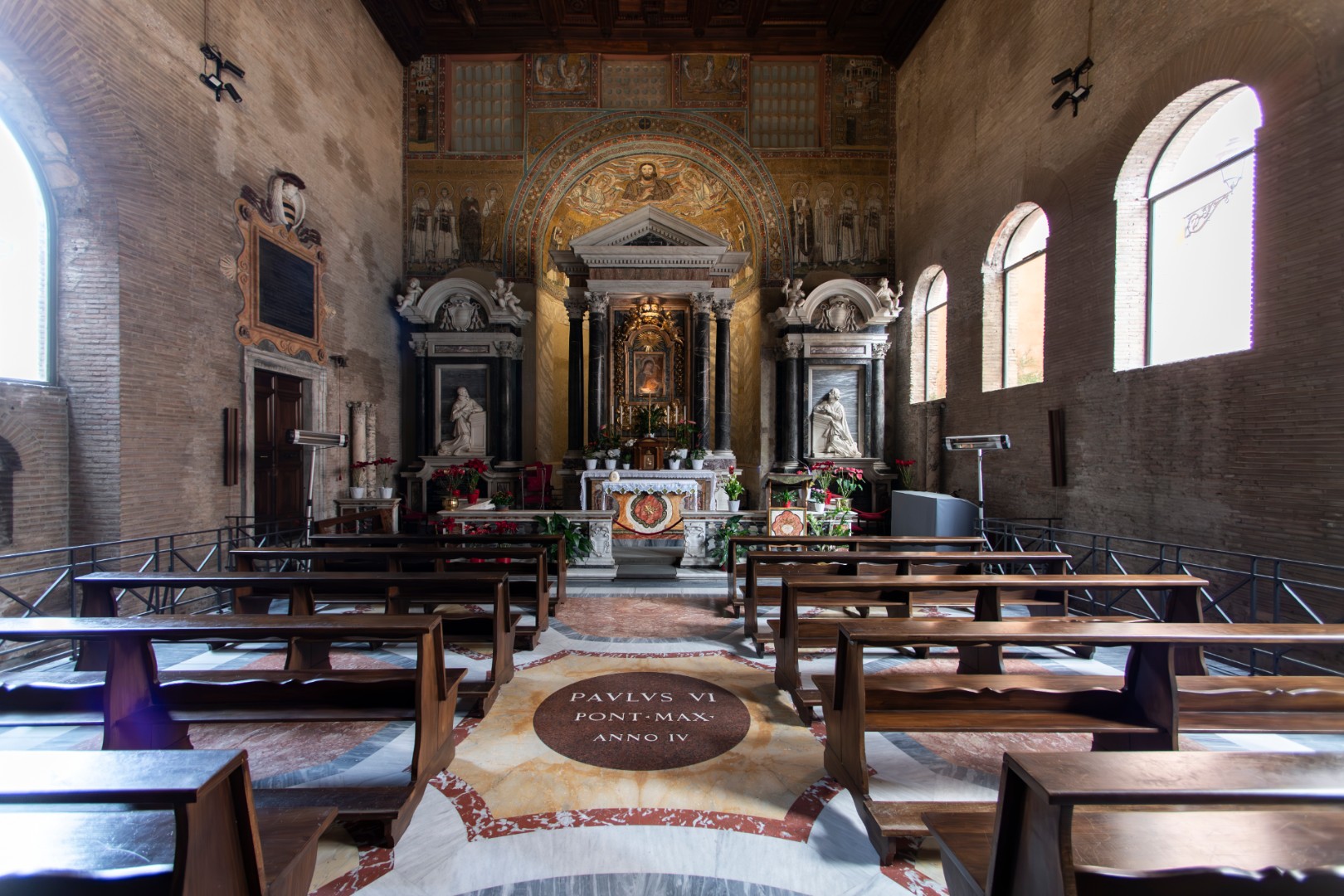In the Chapel of Saint Venantius, realized by Popes John IV (640-642) and Theodore (642-649), newly-baptized neophytes on Easter night receive Confirmation before solemnly entering the basilica in procession to participate in the Eucharist.
The chapel, much venerated by Slavs and Croats in particular, was conceived to house the relics of the Dalmatian martyrs Venantius and Domnius. The mosaic of the apsidal basin has the Saviour in the centre and below him his Church, represented by the Virgin praying with Saint Peter, holding the crusade staff, Saint John the Baptist, Saint Domnius and Pope John IV on the right, and on the left by Saint Paul, holding his letters, Saint John the Evangelist, Saint Venantius and Theodore offering the building: it is the whole of the Church, heavenly and earthly, praying to her Lord.
At the top, there are the symbols of the four evangelists, and at the side, the two cities of Bethlehem and Jerusalem, which recall the birth of Jesus and the Pasch.
The Chapels of Saint John the Evangelist and Saint John the Baptist were instead built at the end of the fifth century by Pope Hilarius (461-468), to give thanks to the two saints for the narrow escape from danger in Ephesus in 449. The entrance architrave of the chapel dedicated to Saint John, the evangelist who penetrated most deeply into the mystery of the divinity and humanity of his Son, bears the dedicatory inscription: “To his deliver, the blessed John the Evangelist, Hilarius, servant of God”, and the Johannine quotation: “Diligite alterutrum” (love one another).
Hilarius, a deacon, had been sent by Pope Leo the Great as his delegate to Ephesus, a city of John the Evangelist, to counter Eutychas who claimed that Christ possessed a single, divine nature: even after the incarnation, the solely divine nature of Christ was to be affirmed.
The so-called “latrocinium of Ephesus”, or “robber synod”, in 449 seemed to mark the victory of this Monophysite position, but two years later, at the Council of Chalcedon in 451, it was reaffirmed that Jesus Christ is one person with two integral and complete natures, divine and human, which are united without confusion, without change, without division, and without separation.












